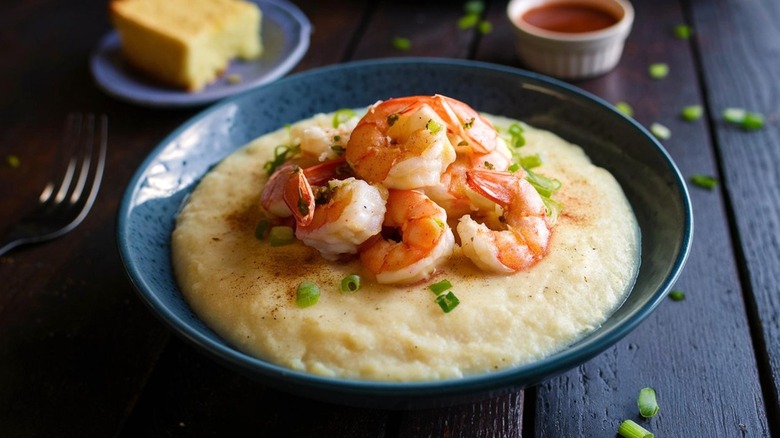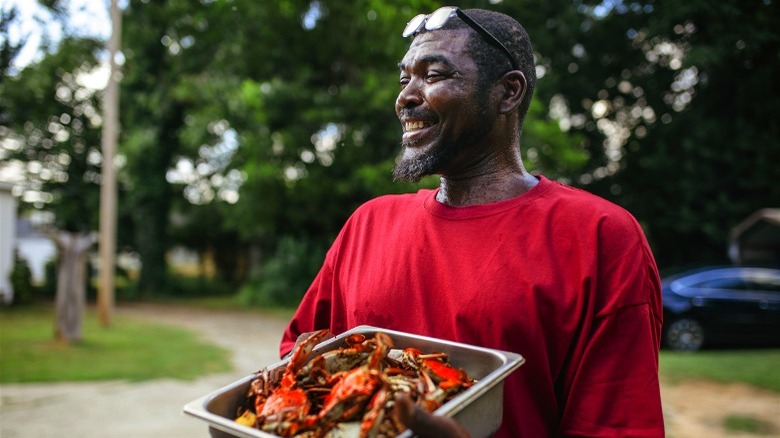The Important Role Gullah Cuisine Plays In South Carolina Food History
Food is history, meaning some foods may be overlooked more than others, depending on where you come from. Outside of the coastal Deep South, some may be unfamiliar with the cuisine and history of the Gullah Geechee people. This culture is an integral part of Southern culinary tradition that predates many modern foods.
The Gullah Geechee is a cultural group formed when African people were enslaved and forced to perform plantation labor in the United States. These people had their own distinct dialects and countries along West Africa's "rice coast," but had to learn to communicate between themselves and those who ran the plantations, resulting in an English creole language called Gullah. Over time, the Gullah Geechee became a solidified people with a unique language and food history that still endures today. It's one of the oldest and most maintained non-American Indigenous food cultures, becoming an established creole cuisine itself.
Gullah Geechee food now has a presence in restaurants across the South Carolina coast. Gullah chef B.J. Dennis has been featured in Anthony Bourdain's "Parts Unknown" and competition show "Top Chef," proving that experts from this culture are making headway in mainstream food broadcasts. Hopefully, we'll see even more appreciation for this part of South Carolina's food history soon.
Characteristics of Gullah Geechee cuisine
Rice is the biggest staple ingredient in Gullah Geechee cuisine because their ancestors came from Senegal, Sierra Leone, Liberia, and other countries along Africa's "rice coast." They applied their grain knowledge to North American coasts, where rice could also flourish. You'll see this key ingredient in Gullah Geechee dishes like Hoppin' John, chicken bog, and perloo.
Gullah Geechee food relies on local produce and catch, with seafood being a main characteristic — fish, shrimp, and oysters all have a place on the plate. If you know how to buy, prepare, and cook crabs, then you'll be in for a treat by using them in a Gullah recipe because crabs are easy to find along the Carolina coasts. Aside from rice, other staples include millet, corn, and benne seeds. The most famous contribution that many people across the U.S. are familiar with is shrimp and grits, which are common on plenty of seafood restaurant menus in the South. Grits are the perfect breakfast you can make ahead of time, too.
It's not uncommon for Gullah Geechee folks to have their own community gardens and farms, too. Fresh and locally sourced okra, tomatoes, and other greens will add a lovely depth of flavor to your country cooking. Should you ever find yourself along the coastal South, consider supporting a Gullah Geechee restaurant for wonderful food with a side of history.

